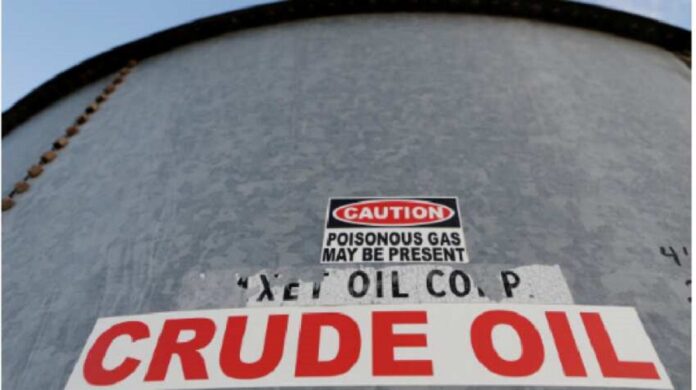US oil futures jumped to their highest in more than a year on Thursday as a drop in crude stocks in the United States added to worries over tight global supplies from OPEC+ output cuts, according to Reuters.
US West Texas Intermediate crude futures (WTI) were up 85 cents at $94.53 a barrel by 0649 GMT, after rising above $95 earlier in the session for the first time since August 2022.
Brent crude futures climbed 78 cents, or 0.8%, to $97.33 a barrel after hitting levels not seen since November.
“The oil market is quickly coming to terms with the fact that the OPEC+ cuts announced in the summer are having a deep effect on crude availability,” said Stefano Grasso, a senior portfolio manager at 8VantEdge in Singapore.
“Stocks are drawing while demand keeps growing. We are still far away from a price level causing demand destruction.”
US crude stocks fell by 2.2 million barrels last week to 416.3 million barrels, government data showed, far exceeding the 320,000-barrel drop analysts expected in a Reuters poll.
Crude stocks at the Cushing, Oklahoma, storage hub, delivery point for US crude futures, fell by 943,000 barrels in the week to less than 22 million barrels, the lowest since July 2022, data showed.
Stockpiles at Cushing have been falling to near-historic lows due to strong refining and export demand, prompting concerns about quality of the remaining oil at the hub and whether it will fall below minimum operating levels.
The crude draws follow production cuts of 1.3 million barrels a day to the end of the year by Saudi Arabia, the Organization of the Petroleum Exporting Countries, Russia and other allies that make up the grouping known as OPEC+. The producers’ group will be meeting on October 4 to review markets.
Grasso said: “I think Saudi can accept much higher prices, but not much lower, and if cutting 10% production gives them a 30% price increase it make sense to do.”
Meanwhile, President Vladimir Putin ordered his government to ensure retail fuel prices stabilise after a jump caused by an increase in exports.
In response, his deputy prime minister cited proposals to restrict exports of oil products purchased for domestic use, adding to market tightness.
“Though oil prices are eyeing the $100 a barrel mark for Brent, the narrative of higher-for-longer interest rates in the U.S. might dampen enthusiasm and could put a lid on prices,” said Sugandha Sachdeva, executive director and chief strategist at Acme Investment Advisors.


